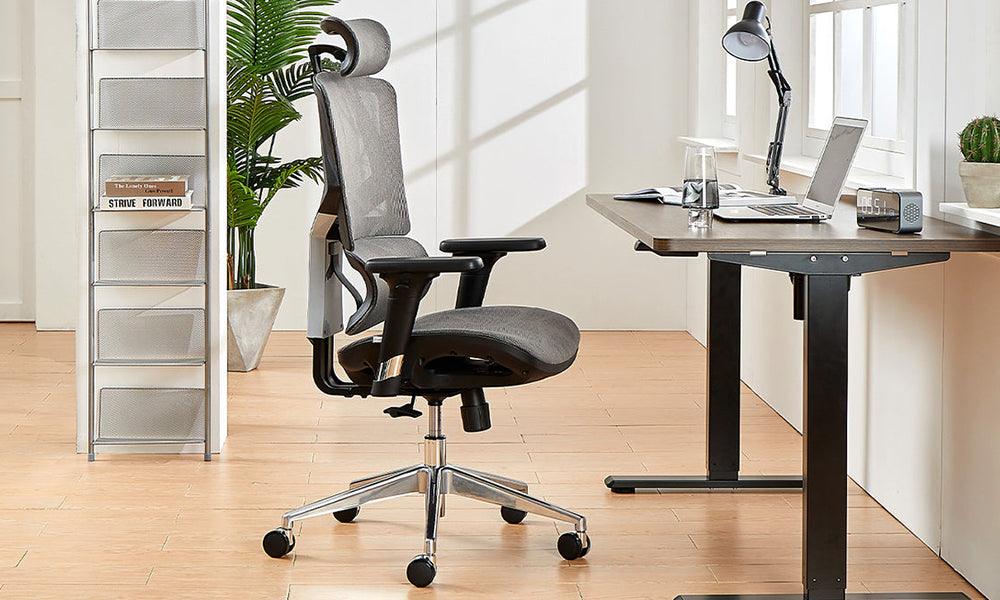Office chairs are a crucial component of your office furniture, and maintaining them properly can significantly extend their lifespan and ensure ongoing comfort. Regular care and maintenance not only preserve the appearance of your chair but also enhance its functionality. Here are some essential tips to keep your office chairs in top condition.
Regular Cleaning
Regular cleaning is vital to maintaining the appearance and hygiene of your office chairs. Dust and debris can accumulate on both fabric and leather surfaces, potentially causing wear and tear over time. For fabric chairs, use a vacuum cleaner with an upholstery attachment to remove dust and dirt. Spot clean stains with a fabric-safe cleaner, following the manufacturer’s instructions.
For leather or faux leather chairs, wipe the surface with a damp cloth to remove dust and grime. Work with a leather conditioner sporadically to keep the substance flexible and prevent breaking . Avoid using harsh chemicals or abrasive cleaners, as these can damage the surface of your chair.
Inspect and Tighten Screws and Bolts
Over time, the screws and bolts in your office chair may loosen due to regular use. Periodically inspect these fasteners to ensure they are securely tightened. Loose components can lead to instability and may cause discomfort or even damage to the chair. Use a screwdriver or appropriate tool to tighten any loose screws or bolts, following the manufacturer’s recommendations for proper maintenance.
Adjust and Lubricate Moving Parts
Office chairs often come with various adjustable features, such as seat height, backrest tilt, and armrests. Regularly check these adjustments to ensure they are functioning smoothly. If you notice any squeaking or stiffness, apply a lubricant specifically designed for office furniture. Lubricate the moving parts, such as the casters and tilt mechanism, to maintain smooth operation and prevent wear.
Protect Against Damage
To prolong the life of your office chair, protect it from potential damage. Use chair mats to prevent wear and tear on the flooring and to safeguard the casters from damage. Avoid rolling the chair over sharp or rough surfaces that could cause scratches or dents. Additionally, keep the chair away from direct sunlight and extreme temperatures, as these can cause fading and material deterioration.
Rotate and Adjust Seating Positions
Frequent use of the same seating position can lead to uneven wear on your office chair. To avoid this, rotate your chair periodically and adjust the seating position to distribute the wear more evenly. This practice helps maintain the chair’s overall comfort and extends its longevity by preventing excessive wear on specific areas.
Monitor Weight Limits
Each office chair is designed to support a specific weight limit. Exceeding this limit can cause undue strain on the chair’s structure and components. Always adhere to the manufacturer’s weight recommendations to ensure the chair’s durability and safety. If multiple users share the chair, remind them to follow the weight limits and avoid excessive force on the chair.
Address Minor Repairs Promptly
Address minor repairs as soon as you notice issues with your office chair. For example, if a wheel is not rolling smoothly or an armrest is loose, fix these problems promptly to prevent them from worsening. Many minor repairs can be completed with basic tools and a little effort, helping to maintain the chair’s functionality and comfort.
Follow Manufacturer’s Care Instructions
Every office chair comes with a set of care instructions provided by the manufacturer. These instructions include specific maintenance guidelines tailored to the materials and design of the chair. Follow these instructions closely to ensure you are using the correct cleaning agents and techniques, and to avoid actions that could void the warranty.
Keep the Chair in a Suitable Environment
The environment in which your office chair is placed can affect its longevity. Ensure that the chair is used in a clean, dry, and climate-controlled environment. Excessive humidity or exposure to extreme temperatures can cause material degradation and affect the chair’s overall performance. Maintain a suitable environment to keep your office furniture in optimal condition.
Replace Worn-Out Components
Even with the best care, some components of your office chair may wear out over time. If you notice that parts such as the casters, armrests, or seat cushion are significantly worn or damaged, consider replacing them. Many office chair manufacturers offer replacement parts that can restore the chair to its original condition. Replacing worn-out components ensures continued comfort and functionality.
Maintaining your office chairs is essential for ensuring their longevity and comfort. Regular cleaning, inspecting and tightening components, and addressing minor repairs promptly will help keep your office furniture in excellent condition. By following these tips, you can enjoy a comfortable and functional workspace for years to come.


